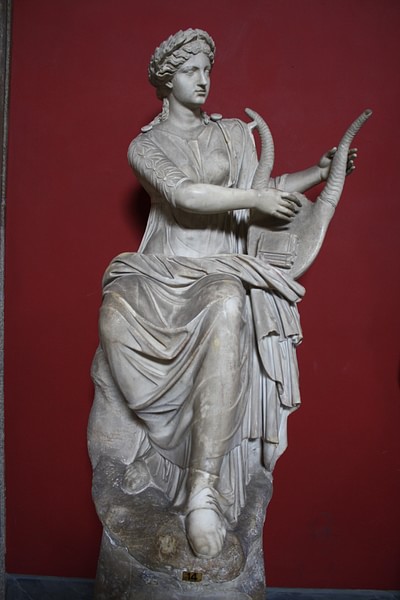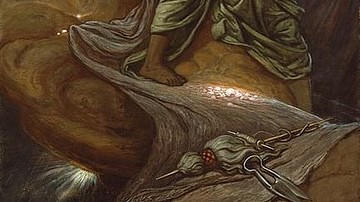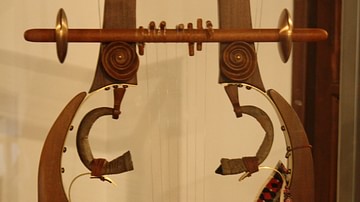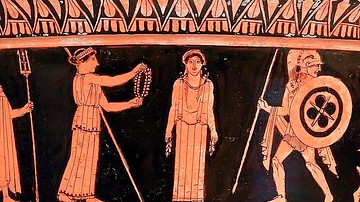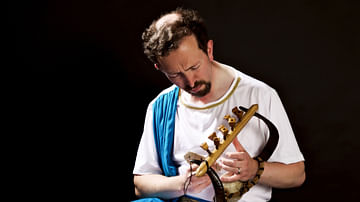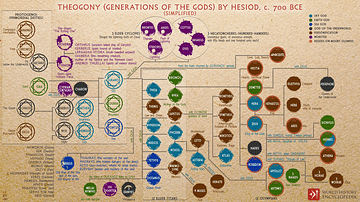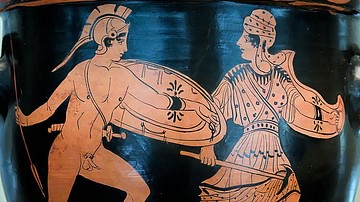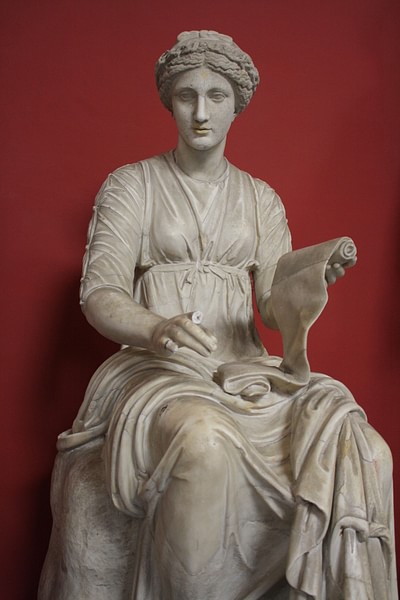
In Greek mythology, the nine Muses are goddesses of the various arts such as music, dance, and poetry. Blessed with wonderful artistic talents, they also possess great beauty, grace, and allure. Their gifts of song, dance, and joy helped the gods and mankind to forget their troubles and inspired musicians and writers to reach ever greater artistic and intellectual heights.
The Muses are the daughters of Zeus and the Titan Mnemosyne (Memory) after the couple slept together for nine consecutive nights. The nine muses are:
- Calliope, traditionally the most important (beautiful-voiced and representing epic poetry and also rhetoric),
- Clio (glorifying and representing history),
- Erato (lovely and representing singing),
- Euterpe (well-delighting and representing lyric poetry),
- Melpomene (singing and representing tragedy),
- Polymnia (many hymning and representing hymns to the gods and heroes),
- Terpsichore or Stesichore (delighting in dance),
- Thalia (blooming and representing comedy),
- Urania (heavenly and representing astronomy).
Certain objects also became associated with the Muses and help to identify their particular talents. Calliope often holds a writing tablet and stylus, Clio has a scroll, Euterpe a double aulos (or flute), and Thalia a theatre mask.
The Classical Muses were believed to live on Mt. Olympus where they entertained their father and the other Olympian gods with their great artistry and extensive knowledge, but later tradition also placed them on Mt. Helicon in Boeotia where there was a major cult centre to the goddesses, or on Mt. Parnassus where the Castalian spring was a favourite destination for poets and artists. On Mount Olympus, Apollo Mousagetes was, in a certain sense, the choir leader of the Muses, although his attachment was not limited to music, as he fathered many children with his musical group. Calliope, the Muse of epic poetry, was the mother of Orpheus, the wonderfully gifted lyre player whose father was said by some to be Apollo himself.
Although bringers of festivity and joy, the Muses were not to be trifled with when it came to the superiority of their artistic talents. The nine daughters of Pierus foolishly tried to compete musically with the Muses on Mt. Helicon and were all turned into birds for their impertinence. The Thracian musician Thamyres (son of the Nymph Agriope) was another who challenged the Muses in music and after inevitably coming second best to the goddesses was punished with blindness, the loss of his musical talent, and his singing voice. This myth was also the subject of a tragedy by Sophocles. The Muses also acted as judges in another musical competition, this time between Apollo on his kithara and the satyr Marsyas, who played the aulos given to him by Athena. Naturally, Apollo won and Marsyas was flayed alive for his troubles.
Hesiod in his Theogony claimed that he spoke with the Muses on Mt. Helicon, and they gave him a luxuriant laurel branch and breathed into him their divine voice so that he could proclaim the glory of the gods and their descendants. Thus, the simple shepherd was transformed into one of the most important poets in history. Hesiod also states that the Muses were created as an aid to forgetfulness and relief from troubles, perhaps as a balance to their mother, who personified memory.
In ancient Greece, music, and by association the Muses, were held in great esteem and music was played in homes, in theatres, during religious ceremonies, to accompany athletics, provided rhythm during military training, accompanied agricultural activities such as harvesting, and was an important element in the education of children. For example, Themistocles, the great Athenian politician and general, considered his education incomplete because he could not play the khitara. Throughout the ancient Greek world musical festivals and competitions were held in honour of the Muses and philosophical schools bore their name: the Mouseia.
In art, the Muses are depicted as beautiful young women, often with wings. The Muses often appear on 5th and 4th century BCE red- and black-figure pottery, in particular in scenes with Apollo playing his kithara or representations of the Marsyas and Thamyres myths. Many statues of the Muses have been found on Delos, an important cult centre to Apollo. In addition, in the 5th century BCE, the iconography of the ideal woman in Greek art came very close to that of a Muse. Music and, therefore, also the Muses, frequently appear as a subject on lekythoi, the elegant funerary vases, which were placed in graves so that loved ones might have the pleasure of music on their journey into the next life. A celebrated representation of the Muses as a group is the three marble reliefs from a statue base, dating to c. 325-300 BCE and now housed in the National Archaeological Museum of Athens.
